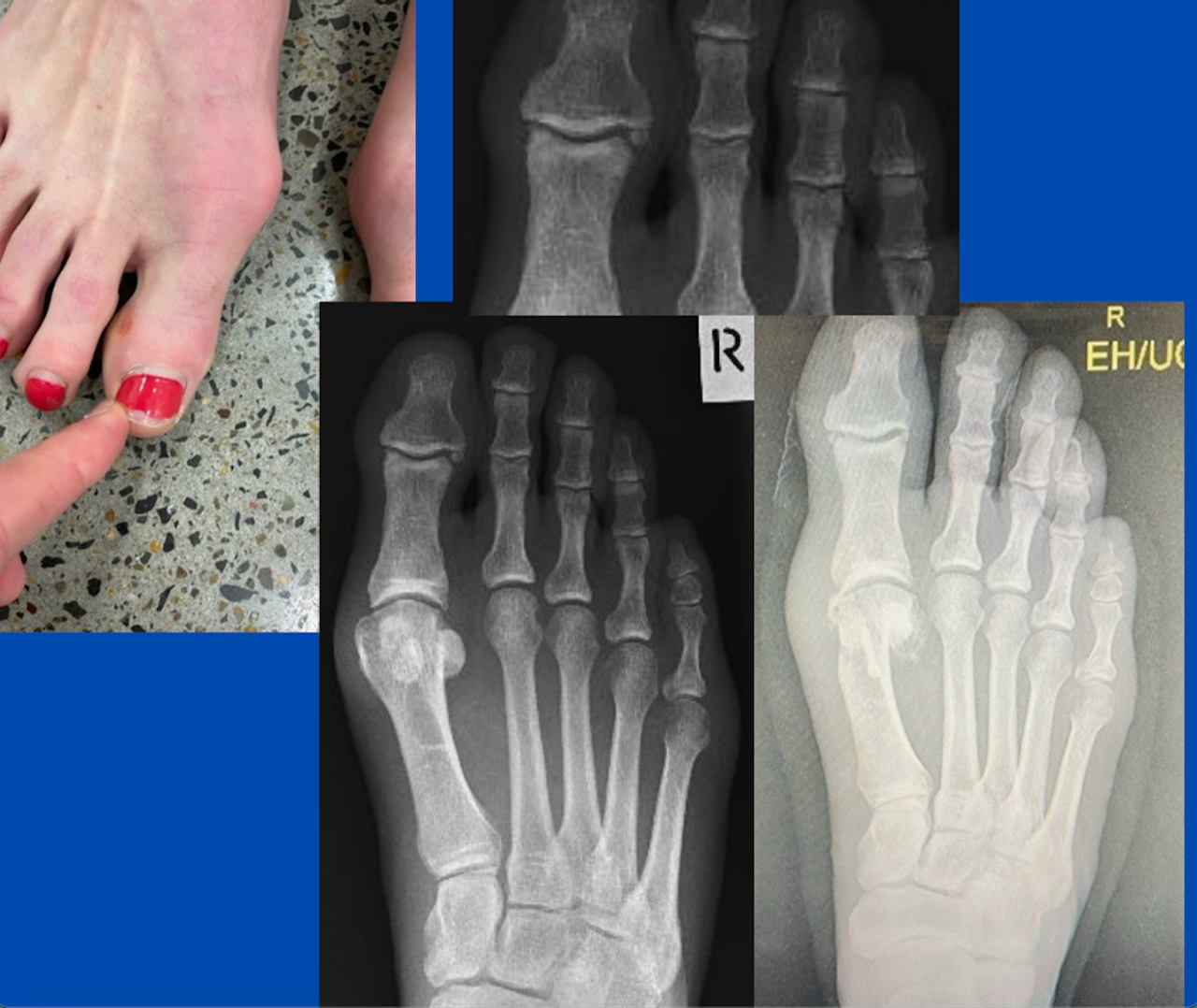The images are from a case that underwent surgery a few weeks ago. The patient had a painful 1st MTPJ, but the main symptoms were felt on the lateral hallux and medial 2nd toe, involving pain and a corn formation. The conservative care had failed to provide enough relief.
Note the signs of compression and friction on the image on the left and the zoomed-in image of the pre-operative foot. The postoperative image on the right shows the correction of the bunion, with the lateral hallux prominence now much smaller.
The underlying bunion was the leading cause of the symptoms. However, there was a prominent process on the lateral IPJ of the hallux leading to the compression and pain.
Once I had corrected the bunion with my usual small incision, I carried out a minimally-invasive burring of the lateral hallux IPJ. This was carried out via a tiny puncture wound known as a portal. This is an example of how minimally-invasive surgery can be utilised to ensure an excellent result with no extension to healing time.
If you have any specific questions or would like to discuss similar cases, feel free to contact me.
Also read:
Juvenile hallux valgus (bunion)
Gout deposits (not bunions)
The problems with keyhole bunion surgery
Biomechanics of a pathology (bunions and pes planus)
Improvements in bunion surgery
Bunion surgery: Modern procedures for quick recuperation and long-term results
(This content is intended for healthcare professionals only)

